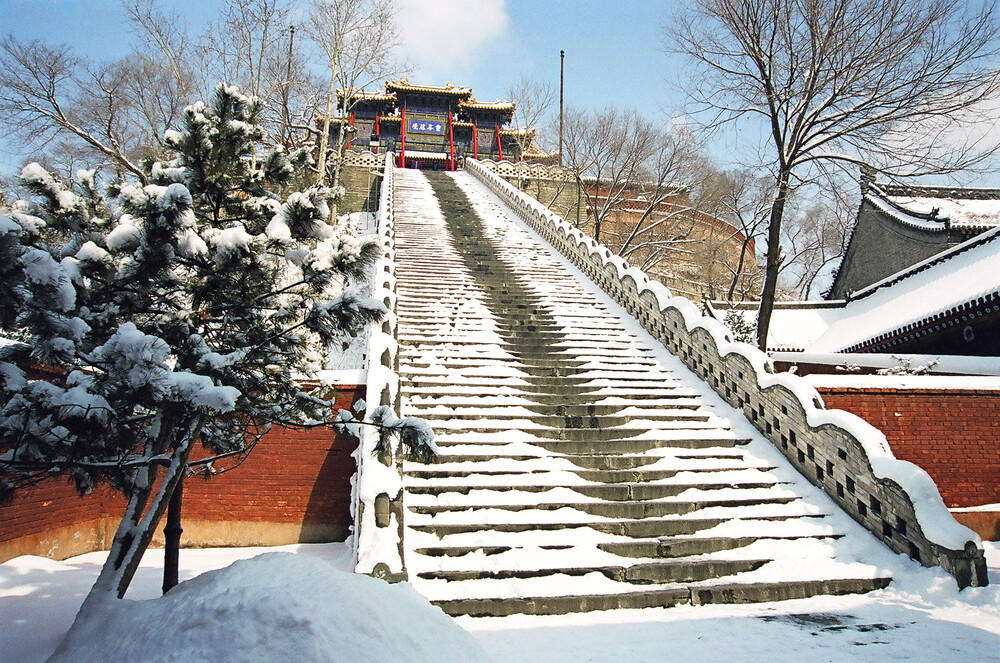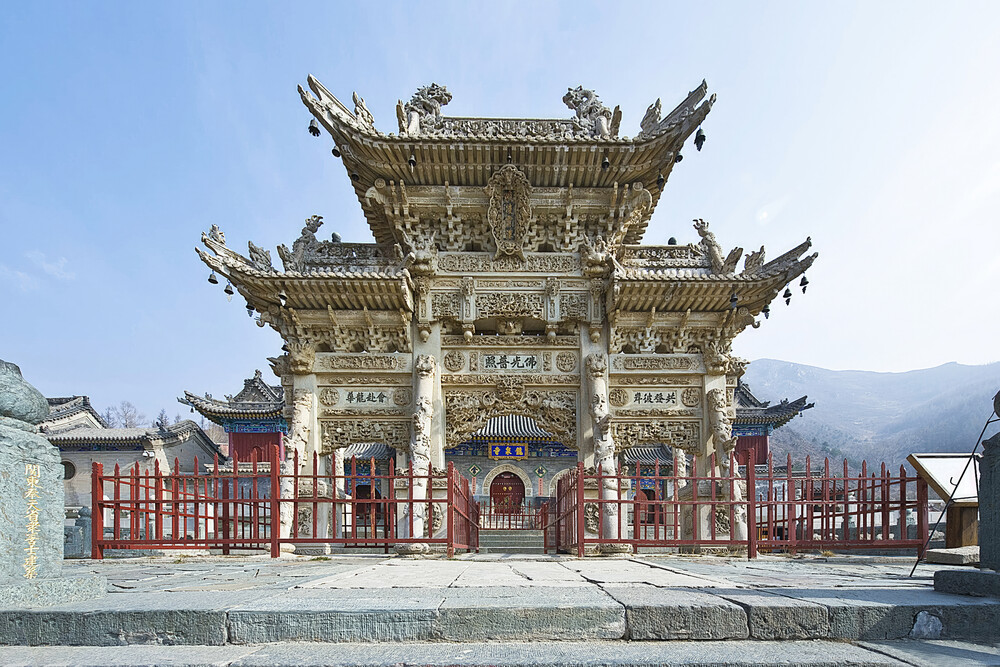Mount Wutai

With its five flat peaks, Mount Wutai is a sacred Buddhist mountain. The cultural landscape is home to forty-one monasteries and includes the East Main Hall of Foguang Temple, the highest surviving timber building of the Tang dynasty, with life-size clay sculptures. It also features the Ming dynasty Shuxiang Temple with a huge complex of 500 statues representing Buddhist stories woven into three-dimensional pictures of mountains and water. Overall, the buildings on the site catalogue the way in which Buddhist architecture developed and influenced palace building in China for over a millennium. Mount Wutai, literally, 'the five terrace mountain', is the highest in Northern China and is remarkable for its morphology of precipitous slopes with five open treeless peaks. Temples have been built on this site from the 1st century AD to the early 20th century.

Mount Wutai with its five flat peaks is one of the four sacred Buddhist mountains in China. It is seen as the global centre for Buddhist Manjusri worship. Its fifty-three monasteries, include the East Main Hall of Foguang Temple, with life size clay sculptures, the highest ranking timber building to survive from the Tang Dynasty, and the Ming Dynasty Shuxiang Temple with a huge complex of 500 ‘suspension’ statues, representing Buddhist stories woven into three dimensional pictures of mountains and water. The temples are inseparable from their mountain landscape. With its high peaks, snow covered for much of the year, thick forests of vertical pines, firs, poplar and willow trees and lush grassland, the beauty of the landscape has been celebrated by artists since at least the Tang Dynasty – including in the Dunhuang caves. Two millennia of temple building have delivered an assembly of temples that present a catalogue of the way Buddhist architecture developed and influenced palace building over a wide part of China and part of Asia. For a thousand years from the Northern Wei period (471-499) nine Emperors made 18 pilgrimages to pay tribute to the bodhisattvas, commemorated in stele and inscriptions. Started by the Emperors, the tradition of pilgrimage to the five peaks is still very much alive. With the extensive library of books collected by Emperors and scholars, the monasteries of Mount Wutai remain an important repository of Buddhist culture, and attract pilgrims from across a wide part of Asia.